Have you ever wondered where coffee actually comes from? Understanding the *origin of coffee* can completely change the way you enjoy your daily cup. From its discovery in ancient Ethiopia to the rich cultural practices surrounding coffee today, there’s a fascinating story behind this beloved beverage that goes far beyond just brewing.
Join me as we explore the journey of coffee through history and culture. You’ll uncover delightful insights about coffee beans and learn how to appreciate their diverse flavors. Whether you’re a casual drinker or a budding enthusiast, this article will deepen your connection to coffee and enhance your overall experience.
- Discover the legendary roots of coffee in Ethiopia
- Explore the diverse coffee cultures around the world
- Learn how to select and appreciate different types of coffee beans
The Origin and History of Coffee
The Discovery of Coffee
The story of coffee begins in the lush highlands of Ethiopia, where it is said that a goat herder named Kaldi first discovered the energizing effects of coffee beans. One day, he noticed that his goats became unusually lively after eating the berries from a certain tree. Intrigued by their behavior, Kaldi decided to try the berries himself. To his surprise, he felt a surge of energy and alertness.
Excited by this discovery, Kaldi shared his findings with a local monastery. The monks, curious about the effects, began to brew a drink from the berries. They found that it helped them stay awake during long hours of prayer and meditation. This early use of coffee laid the foundation for its journey as a beloved beverage across the world.
As word of this magical berry spread, coffee began to find its way into the homes and hearts of many. Different cultures adapted the brewing process to suit their tastes, leading to unique variations that we still enjoy today.
- The goat herder Kaldi discovered coffee’s energizing effects.
- Monks used it to stay awake during prayers.
- Coffee spread through cultures, leading to diverse brewing methods.
The Legend of Ethiopia
Ethiopia holds a special place in the heart of coffee lovers, and its legends add an enchanting layer to the beverage’s history. According to one popular tale, the word “coffee” itself comes from the region of Kaffa in Ethiopia, where the coffee plant was first cultivated. This connection to the land is significant, as it embodies the deep-rooted cultural importance of coffee in Ethiopian society.
In Ethiopia, coffee is more than just a drink; it’s a ritual. The traditional coffee ceremony is a cherished custom, showcasing the hospitality and community spirit of the Ethiopian people. During this ceremony, green coffee beans are roasted over an open flame, ground into a fine powder, and then brewed in a special pot called a jebena. The entire process is a celebration, often accompanied by storytelling and conversation, which brings people together.
- The word “coffee” may come from the Kaffa region in Ethiopia.
- Coffee is central to traditional Ethiopian ceremonies.
- The coffee ceremony emphasizes community and hospitality.
Cultural Background of Coffee
Coffee Culture Around the World
As we delve deeper into the *origin of coffee*, it’s essential to appreciate how this beloved beverage has woven itself into the fabric of societies across the globe. From the bustling cafés of Paris to the vibrant street corners of Istanbul, coffee culture varies dramatically yet shares a common thread — connection.
In many cultures, coffee is not just a drink; it represents social interaction and community bonding. People gather over a cup to share stories, celebrate milestones, or simply enjoy each other’s company. This universal aspect of coffee culture highlights its significance beyond just taste.
- Coffee brings people together across different cultures.
- Cafés serve as communal hubs for social interaction.
- Coffee rituals can reflect cultural identity and values.
The Relationship Between Coffee and Society
Coffee has played a vital role in shaping societies and influencing social structures throughout history. In the 17th century, for instance, coffeehouses emerged as important meeting places for intellectuals and artists in Europe. These establishments became known as “penny universities,” where for just the price of a cup of coffee, anyone could engage in lively discussions on politics, philosophy, and art.
Fast forward to today, coffee still serves as a catalyst for social change. Many movements have rallied around coffee, from fair trade practices to sustainability efforts. As consumers become more aware of where their coffee comes from, there’s a growing demand for ethically sourced beans, which promotes better living conditions for farmers and their communities. This shift not only impacts the economy but also reinforces the idea that our coffee choices can have far-reaching consequences.
Moreover, coffee has a unique ability to adapt to local customs and preferences. For instance, in Italy, espresso is a quick, strong pick-me-up enjoyed standing at the bar, while in Sweden, the tradition of “fika” encourages leisurely coffee breaks with pastries among friends. These variations reflect how coffee can mirror the values and lifestyle of different societies.
In summary, the relationship between coffee and society is rich and multifaceted. As we appreciate our daily cup, it’s worthwhile to think about the stories behind it — the lives it touches and the ways it connects us across cultures.

If you’re intrigued by the rich history of coffee and its profound connections to society, you might find it fascinating to explore the article titled The Origins and Legends of Coffee: A Journey into Its Mysteries. This piece delves into the intriguing stories and myths surrounding coffee’s beginnings, offering a deeper understanding of how this beloved beverage has shaped cultures throughout history.
- Coffeehouses were centers of intellectual discussion in the 17th century.
- The rise of fair trade and sustainability in coffee sourcing impacts communities.
- Local customs shape how coffee is enjoyed around the world.
- Coffee continues to foster connections and reflect cultural values.
How to Choose Coffee Beans
Types and Flavor Differences
As we continue exploring the *origin of coffee*, it’s important to understand how to select the right coffee beans for your taste. Coffee beans come in various types, each offering a unique flavor profile. The two most common varieties are Arabica and Robusta. Arabica beans are known for their smooth, sweet flavors and bright acidity, while Robusta beans tend to have a stronger, more bitter taste with higher caffeine content.
Understanding these differences can help you make a more informed choice when shopping for your coffee. If you prefer a milder, more complex taste, Arabica might be your go-to option. On the other hand, if you’re looking for a bold, intense flavor, Robusta could be the perfect fit. Exploring these options opens up a whole new world of flavor experiences, making your coffee journey even more enjoyable.
- Arabica beans are smooth and sweet.
- Robusta beans are strong and bitter.
- Different types enhance your coffee experience.
How to Identify Fresh Beans
When it comes to selecting coffee beans, freshness is key to achieving the best flavor. Freshly roasted beans can significantly enhance your coffee experience, elevating the aroma and taste. One of the easiest ways to identify fresh beans is by checking the roast date on the packaging. Ideally, you want to choose coffee that has been roasted within the last two weeks for optimal freshness.
Another factor to consider is the aroma. Fresh beans should have a rich, fragrant scent. If the beans smell dull or stale, they likely won’t deliver the vibrant flavors you’re hoping for. Additionally, consider the appearance of the beans. Fresh coffee beans should have a shiny surface due to the natural oils released during roasting. This sheen indicates that the beans are still packed with flavor.
Incorporating these tips when selecting coffee beans can make a world of difference in your brewing experience. As you experiment with different types and ensure freshness, you’ll discover how each cup can reflect the rich *origin of coffee* and your personal taste preferences. Choosing the right beans not only enhances the flavor but also deepens your appreciation for this beloved beverage.

If you’re intrigued by the rich narratives surrounding coffee, you might find it fascinating to delve deeper into its historical context. This article, “Kaldi and the Myth of Coffee Discovery,” explores the legendary origins of coffee and how it has shaped cultures around the world. Discovering these stories can enhance your appreciation for the beans you choose and the beverages you enjoy.
- Check for a recent roast date on packaging.
- Fresh beans have a rich, fragrant aroma.
- Look for a shiny surface indicating flavorful oils.
Coffee Roasting and Brewing Methods
The Roasting Process
Now that we’ve explored the *origin of coffee* and its cultural significance, let’s dive into the next crucial step: the roasting process. This stage transforms the green coffee beans into the flavorful delights we all love. Roasting not only develops the rich aromas and tastes associated with coffee but also significantly affects the final product’s flavor profile.
During roasting, the beans undergo a series of chemical changes as they are exposed to high temperatures. This process causes the beans to expand and release their natural oils, which contribute to the flavor and aroma. The length of the roast and the temperature can lead to different flavor characteristics. Light roasts tend to preserve the beans’ original flavors, while darker roasts bring out more robust, bitter notes. This means that the roasting process is an art form that can enhance or completely change how we experience coffee.
Understanding the nuances of roasting can help you appreciate the *origin of coffee* even more. Different regions produce beans with unique flavor profiles, and the way those beans are roasted can highlight or mask those characteristics. So next time you enjoy a cup, consider the journey those beans have taken, from their origins to the roaster.
- Roasting transforms green beans into flavorful coffee.
- The roast length and temperature significantly impact flavor.
- Light roasts preserve original flavors, while dark roasts emphasize bitterness.
Variations in Brewing Methods
With a deeper understanding of roasting, it’s time to explore the various brewing methods that bring coffee to life. Each method offers a unique experience and can enhance the flavors derived from the beans. From the classic drip coffee to the bold espresso, the way you brew can dramatically alter your coffee’s taste and aroma.
For instance, brewing coffee with a French press allows for more oils and sediments to remain in the cup, resulting in a full-bodied flavor. On the other hand, using a pour-over method can create a cleaner, brighter cup by filtering out many of those oils. Additionally, methods like cold brew offer a smooth, less acidic taste, perfect for hot summer days. Exploring different brewing techniques can be an exciting journey, allowing you to discover new favorite flavors and styles.
As you experiment with these methods, remember that the *origin of coffee* still plays a vital role in the final cup. Different beans react uniquely to various brewing techniques, and the subtle changes can bring out the best in each origin. So, whether you’re brewing a comforting cup at home or ordering at your favorite café, take a moment to consider the beans’ journey and the brewing method that suits your taste.
- French press offers a full-bodied flavor.
- Pour-over creates a cleaner, brighter cup.
- Cold brew provides a smooth, less acidic taste.
Summary
As we wrap up our exploration of the *origin of coffee*, it’s clear that this beloved beverage has a rich history that transcends mere consumption. From its legendary discovery by Kaldi in Ethiopia to its rise as a global cultural phenomenon, coffee connects people and fosters community. Each step of its journey — from the selection of beans to the roasting and brewing processes — contributes to the unique experiences we enjoy today.
Understanding the origins and cultural significance of coffee can deepen our appreciation for each cup we drink. It encourages us to consider the stories behind the beans, the farmers who cultivate them, and the rituals that surround coffee drinking. By choosing ethically sourced coffee and experimenting with different brewing methods, we not only enhance our personal experiences but also participate in a larger narrative of social change.
Ultimately, coffee is not just a drink; it’s a symbol of connection, dialogue, and tradition. As we savor our next cup, let’s remember the incredible journey it has taken to arrive in our hands, and the rich tapestry of history and culture it represents.
- Coffee originated in Ethiopia and has a deep cultural significance.
- The journey from bean to cup involves careful selection, roasting, and brewing.
- Coffee fosters social connections and can influence cultural practices worldwide.
I’d love to hear your thoughts! What aspects of coffee culture resonate most with you? Share your experiences and favorite coffee rituals in the comments below.





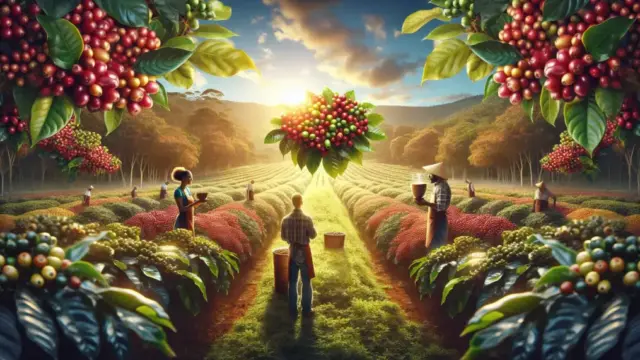


















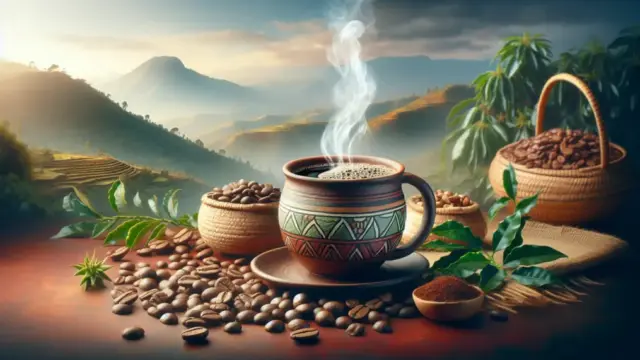








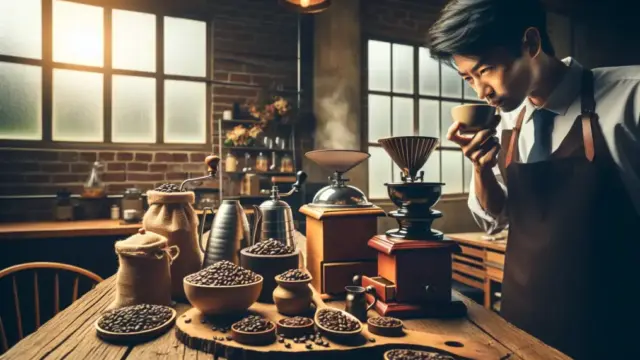






































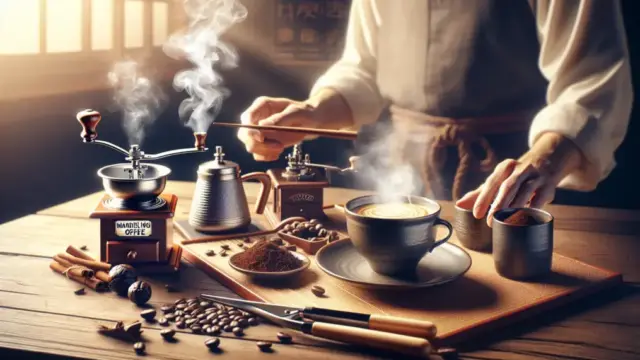

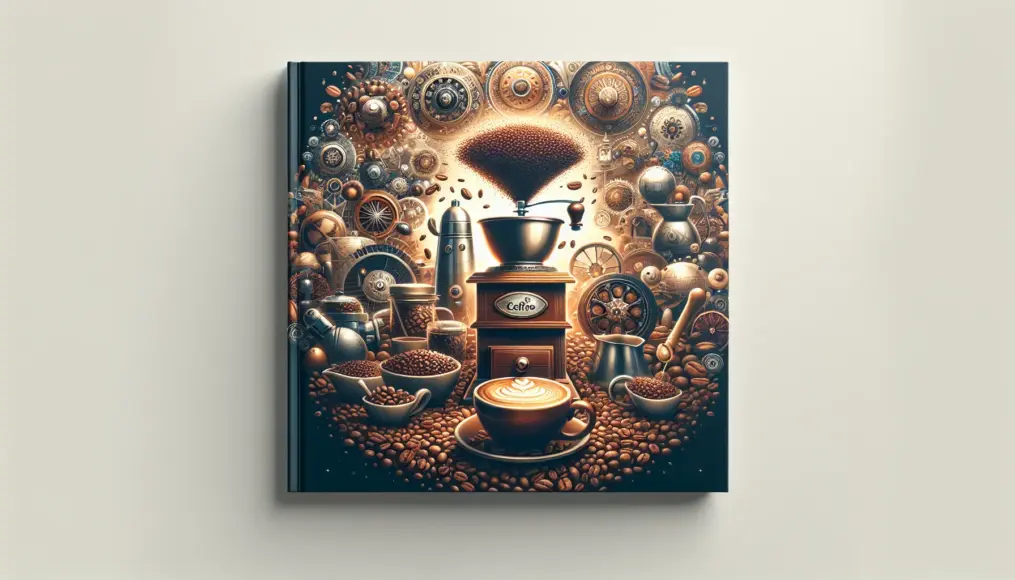
Comment